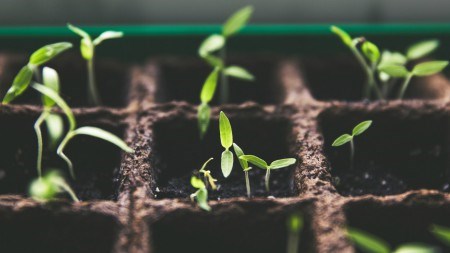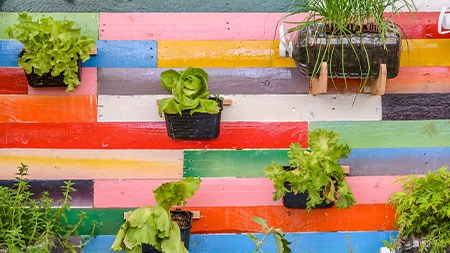Put worms to work to make vermicompost, a nutrient –rich addition for serious gardeners.
Containing five times more nitrogen, seven times more phosphorus and eleven times more potassium than ordinary soil, vermicompost – also called black gold – is a tempting addition for any serious gardener. It’s also extremely easy to make – thanks to the humble earthworm – and doesn’t require much space.
There are quite a few worm composting kits on the market, and many more options for those who want to build one from scratch, but here’s a very easy option that can be made in a flash.
You’ll need
- Two large dark plastic storage bins (something around 30 x 40 x 25 would be a good starting size)
- A drill
- 4 Bricks (or small flower pots) to be used as feet
- Old newspaper
- A sheet or cardboard roughly the size of the bin
- Earthworms (these can be bought at many garden centres)
To start
Drill about twenty evenly spaced holes in the bottom of each bin. These holes will provide drainage and should also be large enough to allow the worms to crawl into the second bin when you are ready to harvest the castings.
Drill ventilation holes all along the sides near the top edge of each bin and drill about 30 ventilation holes in the top of one of the bins for air circulation.
Handy Tip: Drill from the inside so the rough part is on the outside of your bin, if it is on the inside it might hamper the juice flow.
Shred newspaper into thin strips (about 1.5 cm wide), soak it in water and then squeeze out the excess water. Cover the bottom of one bin with the moist, fluffed up newspaper (about 10 cm deep).
Throw in a few handfuls of grit, dried leaves, sawdust or soil.
Add your worms to the bedding.
Gently cover with a piece of damp cardboard cut to size (worms love cardboard, and it breaks down within months) or “tuck them in” by covering with a few sheets of damp newspaper and tucking down at the sides.
Place the lid without the holes onto the ground, top side down. This lid will serve as a drip tray for any “worm tea” that drains from the bins. Put the four bricks or plant pots in the four corners of the lid, and stand the empty bin on these. Position the bin with the worms in it, gently inside the empty bin, (making sure the ventilation holes are exposed) and put the lid with holes in it, onto the top of the second bin.
Choose a well ventilated area - a shady spot or garage - for your bins.
Start feeding your worms – slowly at first – and increasing and adjusting as they multiply and as you see how much they eat and what they like. An earthworm can consume about 1/2 of its weight each day. At first you won’t have to feed them much but as they mature you will need to feed them every few days. They reproduce rapidly but regulate their numbers based on the amount of food available.
Gently bury the food in a different section of the bin each week, under the cardboard. The worms will follow the food scraps around the bin. Burying the food scraps will help prevent fruit flies and smells.
The worms will chew their way through the material in your bin, leaving their castings behind. When the first bin is full and there are no recognizable food scraps, put new bedding material in the second bin and place it directly on the compost surface of the first bin. Put your food scraps in the damp bedding of the second bin and in a few weeks most of the worms will have moved to the second bin in search of food. The first bin will now contain (almost) worm free vermicompost. (You can gently lift out any worms that might remain, and place them in the new bin, or put them into your garden.) If you want to use the castings before your bin is full, bury fresh food in a different part of the bin and wait a few days until most of the worms have moved across.
Worms are vegetarian. Feed them on veggie scraps, fruit, breads, grains, cereal, coffee grounds, tea bags, and paper. Avoid dairy products, fats, meats, faeces or oils. Go easy on the citrus, as it’s a bit too acidic for them. You can feed them every few days, or as infrequently as once every two weeks. Just make sure you replace the food that is disappearing.
Use the worm tea that drains into the lid on the ground regularly. Every so often lift the top bin and use the tea that drains into the bottom bin. Use the castings diluted or undiluted in your garden.
Handy tip: If you’re going away on holiday, spoil them by placing a big butternut in the middle of your wormery!



